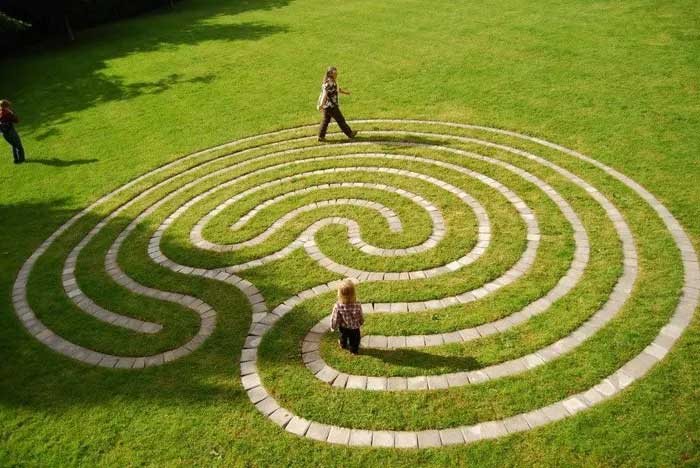Human instinct is to go in circles
In the absence of external directional signals, lost people usually do not go more than 100 meters from their starting point, no matter how long they travel.
For centuries, humans have been thought to have a natural tendency to move in circles . In 1928, biologist Asa Schaeffer claimed experiments showing that blindfolded people would walk, run, swim and drive in spirals, a phenomenon he attributed to the 'spiral mechanism'. mechanism) in the brain.
Airline navigator Harold Gatty believes that humans move in circles because of simple biological asymmetry; One leg is usually longer and stronger than our other leg. 'Anatomically, we all lack balance ,' writes Harold Gatty.

People walk at the Mandala maze on Mount Tabor (USA). (Photo: Mandala).
In 1986, Norwegian biologist FO Guldberg argued that going in circles is one of the 'general laws' in biology. He told stories of birds flying around in front of the lighthouse, schools of deep-sea fish swirling in the light from a diver's flashlight, rabbits and foxes running around to escape hunters, and people getting lost in the mist. blindly wandering in circles.
Guldberg does not consider going in circles a type of error. The principle of circular travel , he reasoned, was to ensure that when lost, animals could always find their way back to 'the place of birth to which animals struggling to survive must return frequently. , whether it is the milk of a cow, the warm wings and guidance of a hen, or the shelter of a tree or bush chosen by maternal instinct'.
Regardless of whether we like it or not, he suggested, we still walk in circles to find our way back to familiar places.
In 2009, a researcher named Jan Souman decided to do an experiment on the instinct to walk in circles. He equipped volunteers with GPS tracking devices and asked them to follow a straight line through a foreign land, in the jungles of Germany or the deserts of Tunisia.
Without the aid of directional cues, such as the sun, study subjects did tend to retrace their own paths; this is true.
'Walking in a straight line sounds easy,' Souman told me. 'But if you think carefully, it's actually not easy at all.' Like riding a bicycle, riding in a straight line is essentially a complex balancing act that requires regulation by the nervous system, which is why it's an effective way to test whether a person is getting too drunk.
More in-depth experiments also ruled out the factors of leg length and strength. Souman also did not find any evidence to support the hypothesis that there is an "instinct to go in large circles or spirals, but rather zigzag lines like a child's crayon scribbles" . Sometimes, they circle back to the same place. - the point at which walkers spot a familiar landmark, mistakenly conclude that they are going in a circle, and start to panic - walkers almost never circle back to the destination all originate.
Souman concluded that on average, in the absence of external directional signals, lost people do not go more than 100 meters from their starting point, no matter how long they travel .
- New explanation about why people kiss
- Why stay up late or get dark?
- Decode the fairy circles in Danish waters
- Discover hundreds of mysterious circles
- Why do men like women's first round?
- Mysterious circle between desert like human skin cells?
- Video: Mysterious circle on the field in Germany
- Believe in the mother instinct
- Mysterious circles in the field
- Why is it so difficult to draw a perfect circle by hand?
- Decode the mysterious circle in Antarctica
- Find solutions to mysterious circles
 'Fine laughs' - Scary and painful torture in ancient times
'Fine laughs' - Scary and painful torture in ancient times The sequence of numbers 142857 of the Egyptian pyramids is known as the strangest number in the world - Why?
The sequence of numbers 142857 of the Egyptian pyramids is known as the strangest number in the world - Why? History of the iron
History of the iron What is alum?
What is alum?